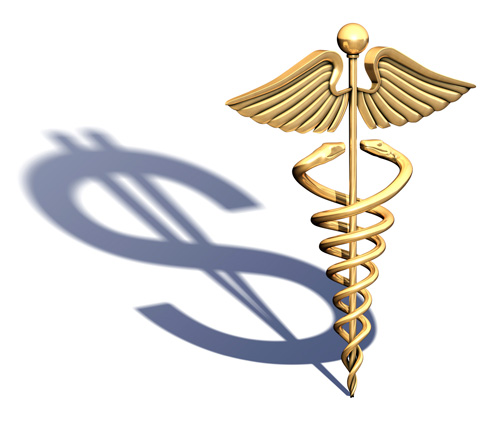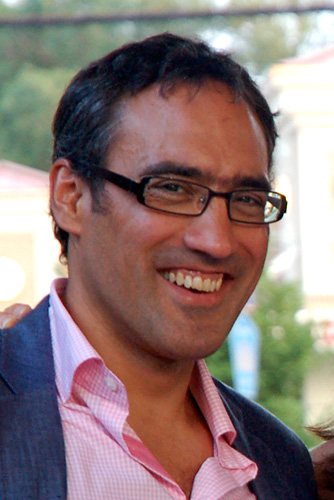BY JOE ROJAS-BURKE | OB BLOGGER
 Better safe than sorry. That’s how we tend to think about health care decisions. But as a guiding principle, it’s often a huge and costly mistake.
Better safe than sorry. That’s how we tend to think about health care decisions. But as a guiding principle, it’s often a huge and costly mistake.
BY JOE ROJAS-BURKE | OB BLOGGER
 Better safe than sorry. That’s how we tend to think about health care decisions. But as a guiding principle, it’s often a huge and costly mistake.
Better safe than sorry. That’s how we tend to think about health care decisions. But as a guiding principle, it’s often a huge and costly mistake.
Here’s an example. While living in Boston last year, our 15-year-old came down with a sore throat with a couple of swollen lymph nodes. I learned later that his symptoms and initial blood test results were absolutely typical of what you’d expect from a case of mono, the common viral infection in teenagers that generally requires nothing more than bed rest. But the pediatrician who saw him insisted that he needed to be seen by the hematology oncology group at Boston Children’s Hospital. We’re talking world-class pediatric cancer specialists.
We accepted the referral and left the pediatrician’s office in a state of stunned disbelief. And we waited, terrified, for three weeks to find out from the oncologists that our son’s blood cells were perfectly fine. He had tested positive for the virus that causes mono. The cost? Those painful weeks of unnecessary anxiety about our son facing a life-threatening disease; my son’s blood, drawn redundantly by the oncologists, who wouldn’t rely on the two blood tests already done by the pediatrician; and a $965 bill from Boston Children’s Hospital. All of it avoidable.
A relevant new study, published in November in the journal Health Affairs, added up the costs of our just-to-be-on-the-safe-side mentality in the arena of emergency medicine. Health systems in Portland and six other metropolitan areas are squandering about $137 million a year by transporting non-seriously injured patients to the highest level trauma centers, the authors concluded. EMTs in most cities use triage guidelines to decide which patients require transport to a major trauma center to avoid overwhelming them with less serious cases. But in the two-year study, more than a third of the 248,342 low-risk patients wound up getting transported to major trauma centers, which have higher costs than community hospitals. (Treatment at Level 1 trauma centers cost $4,833 more per patient than at nontrauma hospitals, after adjusting for differences in patient age, severity of illness, need for surgery and many other factors affecting cost.)
It is possible that some of that added spending adds value for patients with minor or moderate injuries. Perhaps they are less likely to have complications, missed diagnoses or other errors at trauma centers. But there is no evidence that that is the case. In fact, studies to date suggest that trauma centers and non-trauma hospitals provide comparable care for non-serious injuries and that the added costs of trauma centers are worth it only for serious cases.
Our bias to err on the side of excess has made it easy for profiteers to take advantage of us as consumers. Consider the Pap smear, a screening test for cervical cancer that until recently cost about $30. Enterprising lab companies have figured out how to bundle additional tests with Pap screening and charge $1,000 or more. Writing in the New England Journal of Medicine, Dr. Cheryl Bettigole, a New Jersey physician, explains:
“The single-vial women’s health test is being heavily marketed by multiple laboratories. It includes not only the Pap and HPV tests but also tests for multiple infections — including some we would rarely have tested for in the past — for which we often have no evidence of benefit. Costly tests that once would have required physicians to submit multiple collection vials and specimens can now be ordered with the Pap smear simply by clicking a single box in the electronic medical record. Nothing at any point along the way alerts either the clinician or the patient to the high costs of these tests or to the fact that there is little medical evidence to suggest that they are useful for most patients. It seems harmless, even possibly beneficial, to run these additional tests, and for our staff, it eliminates the risk of missing a test the doctor might have wanted to have run. The risk it poses, though — the one I face when a patient calls about a crippling bill — is that more and more women may choose not to undergo screening, afraid of the financial consequences.”
Countless other examples make clear that our thinking about health care decisions is harmfully tilted toward unnecessary intervention. The controversy over mammography screening is revealing.
After years of promoting annual mammography screening starting at age 40, the U.S. Preventive Services Task Force came out with new recommendations in 2009 cautioning that the risk outweighs the benefit for younger women. There is good evidence that mammography screening saves lives, but it also leads to overdiagnosis: the detection of abnormalities that will never cause harm. By one estimate, 1.3 million American women have been overdiagnosed because of mammography screening during the past 30 years and these women have endured some combination of surgery, radiation therapy or chemotherapy for a nonexistent disease.
Recognizing the harm, the task force said it’s better for most women to wait until age 50 to begin mammography screening unless they are at high risk for breast cancer – a recommendation in line with a number of other independent medical groups, including the American College of Physicians.
Public reaction to the mammography guidelines was overwhelmingly, venomously negative. Media reports prominently quoted radiologists and cancer specialists who dismissed the task force’s recommendations as an unethical attempt to save money at the expense of women’s lives. And in the years since, mammography screening practices have persisted essentially unchanged. The federal Affordable Care Act actually expanded insurance coverage in 2010, requiring private health plans to fully cover annual mammograms for women starting at age 40. And mammography screening remains as common as ever among younger women, a recent study found. Screening rates among 40- to 49-year-old women were 46.1% in 2008 and 47.5% in 2011, a recent study found.
Considering how the mammography controversy played out, I’m not sure that as a society we are ready to give up thinking that it’s better to err on the side of overtreatment, It seems like such an obvious truth to so many people that they immediately discount any authority who suggests otherwise. In the narrative that feels truest, the villains are profit-motivated insurance company CEOs or cost-cutting government bureaucrats who are trying to impose a cruel form of rationing. It’s time for us to start heeding a more nuanced story in which there are times when medicine can be too much of a good thing.
Joe Rojas-Burke blogs about science and health care for Oregon Business.

